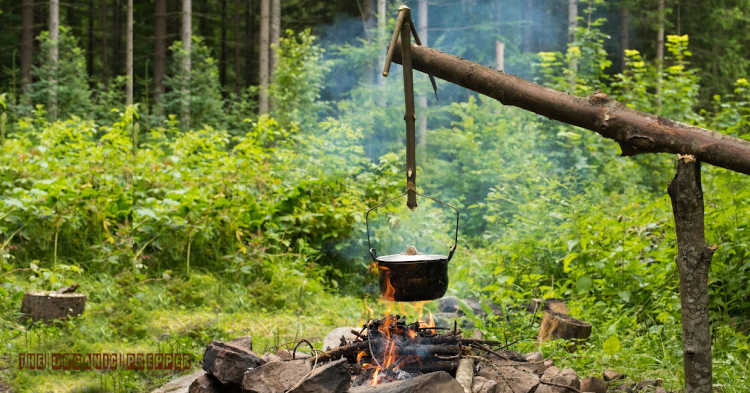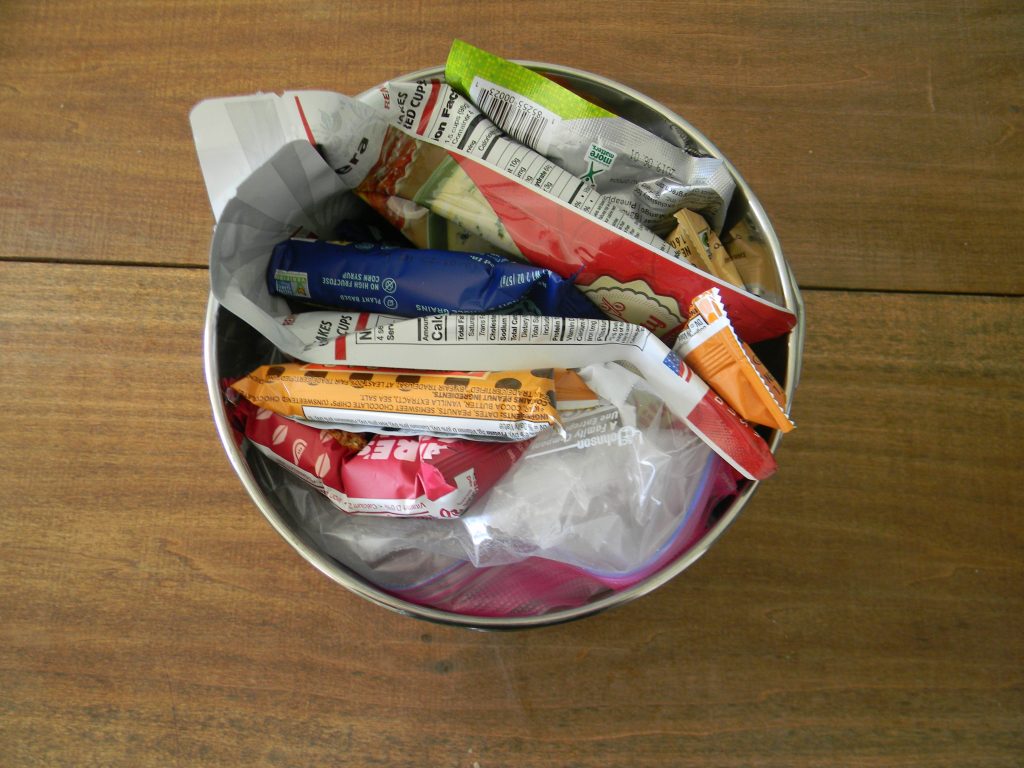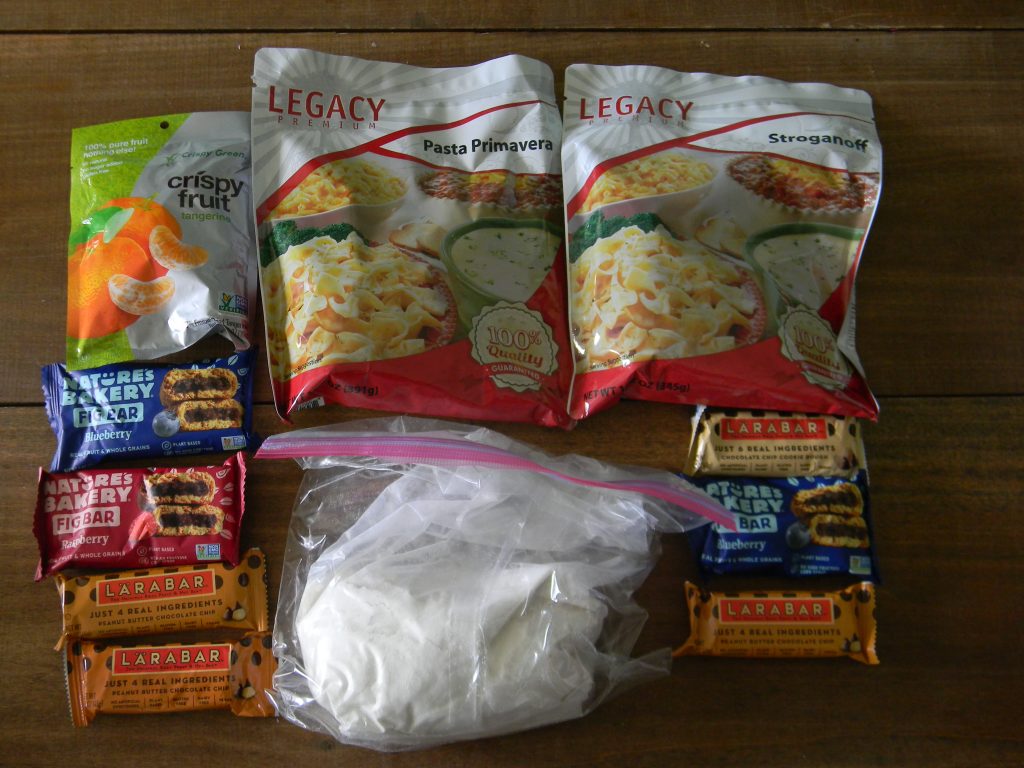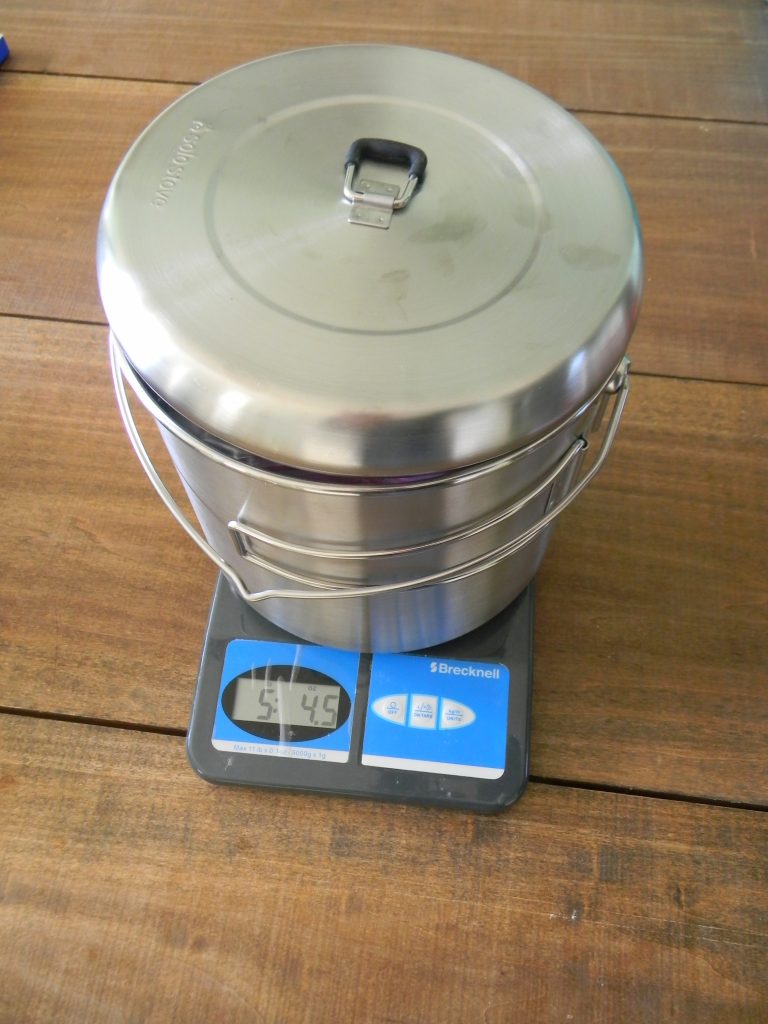If you're new here, you may want to subscribe to my RSS feed. Thanks for visiting!
By the author of The Prepper’s Guide to Post-Disaster Communications and The Faithful Prepper
In the ideal situation, every member of your family would be strong enough to carry their own food if it came time to evacuate from an area. But the ideal doesn’t always happen in the nitty-gritty of life, so what are you to do when it comes to the entire family needing to evacuate from an area on foot, and you’re the one who is predominantly responsible for carrying the bulk of the gear?
While I don’t think there’s any doubt that MREs are the most convenient means of preparing a meal while out in the woods with as minimal fuss as possible (e.g., you can eat them almost immediately, they don’t require fuel per se, and the amount of water you need to cook them with is about the same amount as the spit I’ve seen tobacco chewers generate), I think that there are potentially times or arenas where you don’t want to just load up on MREs.
Normally, when backpacking I’ve always traditionally carried all of my food with me in a waterproof bag. That way, all the food stays in one place, and I can easily hang that bag up in a tree over the course of the night as my bear bag.
I’ve been researching Mors Kochanski quite a bit of late, though, and one of the things that he constantly harped on was the need for a metal pot with a hanger. If you saw my posts on the Dakota fire hole (here and here), this was one of the main lessons I learned here. I have always taken a backpacker’s metal pot set with me when I go out to spend the night in the woods, but if you’re trying to cook without some type of propane or alcohol backpacker’s stove – say, you’re trying to cook on a campfire – just using a regular metal pot is a pain in the butt and takes forever.
So I got a metal pot with a hanger.
So I picked up a metal camping pot with a hanger that is large enough that it could be used to cook a meal for a family.
There’s zero way that you would ever want to pack something as large as this in your bag without filling it up with stuff as well, though, so I started to think about this serving as a small, backpackable family food bucket of sorts. We’ll call it the lunch pail.
If you’re going to cook for your family while you’re out in the woods, ideally, you’ll be able to do it all with one pot, especially if you’re trying to be quick about it. For this reason, I think that Legacy meals are a good option here. They’re a one-pot meal that typically contain 1300 or so calories per pouch. I stuffed in a stroganoff pouch and a pasta primavera pouch here. This gave me 3000 calories on the dot.
I then stuffed in half a box of Bisquick (I’ll show you why in a future post). This was 14 servings, coming out to 2100 calories.
You have to have snacks when you’re out in the woods. If you just wait until mealtime to eat, people tend to get pretty short-tempered. If you add in the stress of not being in the woods for fun, then that adds a whole other element to the game. So because of this, I stuffed in four Larabars and three fig bar pouches. The Larabars were 880 calories in total, and the fig bars were 600 calories in total.
I had a little bit of space left where I stuffed in a bag of freeze-dried oranges on a whim, but I think this was a waste of space after I started looking at the nutrition information on the bag later. You really don’t get much out of eating them. I would have been much better served stuffing in 3-4 bags of instant oatmeal.
But, with just the oranges in there, I was able to squish in around 6620 calories for a total weight of 5 pounds 4.5 ounces.
It most certainly wouldn’t want to be the only food that I was carrying on my person, and each member of your family that can walk would want to at least carry some food with them as well, but the lunch pail idea, I think, does give you a few advantages.
Yeah, you obviously have the food that’s stuffed inside, but you also then have a means of cooking and boiling water as well. Whether you’re making squirrel stew or for some strange reason all your Sawyer Minis broke, this would give you a way to deal with it that you likely wouldn’t have otherwise.
Could you use it as a bear bag of sorts?
If you had a dry bag large enough to handle it, I suppose. I don’t think that’s really a great use here, though, honestly. I would still pack a designated dry bag if you intend to hang a bear bag while you’re out in the woods, too.
While the pot I have holds water, it’s not going to protect your food against rain if you just hang a pot with a lid from a tree. I suppose somebody could make the argument that being in a metal bucket would protect your bear bag food from rodents, but I’ve literally never had a problem with a mouse that was smart enough to climb up a tree, find the appropriate branch, and then climb down the paracord to get to my food.
What do you think about all this?
(Also, for what it’s worth, I’d just like to point out that the amount of carbohydrates in this lunch pail is 67% of the total calories. Check out my recent post on the golden ratio to see the point I’m making here. A hazy fit?)
Do you like the lunch pail idea for family bug-out situations? Is there stuff you’d add? Stuff you’d take out? It’s still an idea I’m tinkering with, so I’d be more than happy to hear what all y’all are thinking. Let us know your thoughts in the comments section.
About Aden
Aden Tate is a regular contributor to TheOrganicPrepper.com and TheFrugalite.com. Aden runs a micro-farm where he raises dairy goats, a pig, honeybees, meat chickens, laying chickens, tomatoes, mushrooms, and greens. Aden has four published books, What School Should Have Taught You, The Faithful Prepper, An Arm and a Leg, The Prepper’s Guide to Post-Disaster Communications, and Zombie Choices. You can find his podcast The Last American on Preppers’ Broadcasting Network.



















I’ve carried a stainless steel coffee pot, with hanger, for decades. Packed with food stuffs and a backup Bic lighter. Get an 8 cup to 28 cup size coffee pot depending on your requirements.
A topic not covered above is criteria for selecting what kind of metal to use for your cookware. Using an aluminum pot for carrying is not a problem but in recent years there have been many warnings about some foods (especially acidic) that react badly in aluminum. There have also been a number of autopsy results from Alzheimer’s patients that have shown excessively high concentrations of aluminum in their brains. So years ago I stopped using any of my aluminum pots and pans in favor of stainless steel and cast iron cookware. Here’s just one of many articles about the risks of cooking with aluminum pots or pans:
https://www.drmanik.net/aluminium-is-dangerous.html
It is easy to run a search on this topic and find many other articles on this topic. While I don’t see a problem with using an aluminum-coated reflector oven (often DIY) for cooking where there’s no direct contact between the foods and the metal, I won’t be using aluminum foil to wrap foods for cooking in a campfire or oven anymore.
A side issue is about some stainless steel cookware that a magnet will stick to while other stainless steel cookware will not attract a magnet. The difference is of importance only if you want to use such pots as well on an induction stove burner where the magnet attraction is mandatory to assure the pot will work there as well.
So if you have any interest in being able to use (and learn with) the same cookware on any stove at home (whether electric-powered induction, ordinary electric burners, natural gas burners, etc) or remotely while traveling (with a portable induction burner) or camping where a campfire is handy … then either a magnet-attracting stainless steel set of cookware or cast-iron cookware can handle ALL of those situations — where aluminum may be dangerous for some foods in most of them and certainly won’t work for induction burners.
–Lewis
Cast iron is great but quite heavy. Titanium is great for bugging out, cast iron better if it’s already where you want it to be.
Something to mention about cast iron is that it releases iron into the food which can be harmful to people with hemochromatosis (iron overload). Although this is genetic, My husband was unaware he had it until a few years ago. Using cast iron would be detrimental to his health.
All excellent tips and advice.
I would only pack the foods into my pot that I would need to convert foraged foods into wholesome meals. Pack food into the pot in sealable plastic bags. I can put a lot of flour, oil, oatmeal and sugar into a small stockpot. A heavy-duty pull behind wagon can be pulled down most trails to carry your supplies and small children if you need to great distances to get to your bugout location.
Personally, I think that if you have a bugout location to live at, I would be seriously thinking about finding a way to live in it now rather than waiting until you “can afford” the move. We moved here to our bugout location back in 2020 at the beginning of the pandemic and have found ways not just to survive, but thrive as well. We do have a plan in place in case we have to bugout even further if the situation warrants, but it would involve a minimum effort to relocate.
TOP Todays topic is proof positive weight an space on youR back is a problem
So i hope you might start to solve weight an mobility
As a PROBLEM To be solved
When you use a BICYCLE
Bicycles carry THE BIG POT FULL OF FOOD
SolveS the need to carry a BIG GUN And lots of Ammo
CARRY WATER
Carry a Real AXE
CARRY A Bigger TARP, TENT
Can be made in to a LEAN TO by using more than one
An so few understand BICYCLE are used in WAR
A BICYCLE called a Tandem made for Two
I have taught my Family how to pack a Tandem Bike
FOR LONG DISTANCES
How TO WORK AS A TEAM
And TOP Bicycles go off trail , many are made to .
Start writing about How to use practical Tool carrying
By
Bicycle
Need more advice seek me at my Email
What type of pot to use has always been a question I have had.
I have a coated aluminum nested set, with two sets of camp handles, cleaning and drying cloths.
But they are for some kind of camp stove use. One or two person use, is about it. Be stretching it to make for a family of four or more.
I am a big fan of cast iron and have many. While heavy, with a proper lid, the ability to hang over a open fire, or even cook over coals and coals on top offers a better flexibility to cook via different methods for different foods, be it a stew, bread, muffins, braised meat.
Might be something I need to explore.
Thank you Aden for the insight.
Aluminum IS lightweight but after a while, all this bugout stuff is going to get beat up. Stainless is an option but overall, NOTHING honestly beats a good ole cast iron pot and pan. It’s been proven, literally over the course of hundreds of years, to withstand the test of time.
Yes it’s a bit heavier but when you are cooking in less than optimal conditions, that heat retention can literally be a life saver.
Sturdy, easy to clean, won’t get tore up by rough handling or acidic foods.
It’s a win for me.
You want some bread, but only have some acorns, smash them up with the cast iron pot. I’d live to see you do that with aluminum and not end up stress cracking it, busting it up after a while!
A A Ron
I have been hanging a pot off my backpack for decades. The food is all inside.
When it starts hailing, you can put the pot over your head to protect yourself too. You can collect water in it. You can bap the kids across the bibbity when they start getting mouthy, with it. You can use it for a musical instrument at nights end. You can do your laundry in it, and dig a hole with it for doing your doody, which you can even use it for as well… in a pinch.
Yes Boys and Girls, the Majestic Cooking Pot can save your life. (queue up corny music in the background)
That is a nice looking pot. Whose brand? Looks to be about 2 quarts?
Additional way to carry food content is in molle pouches, like surplus SAW ones. When empty they fold flat, or can be used when collecting twigs and sticks for a fire.
Thing about bugging out is all the other people doing it too. The book Dies The Fire has a good bit about that in its beginning and the problems. It is a strange SciFi book, but lots of survival reference content in worst case scenario.
Just having grill grates allows you to use regular cookware over any heat source, including an open fire. I have a fire pit with grill grates, but even if you only had the grates, you could prop them up on rocks or other large objects. Folding grates can fit in any backpack and are fairly light. Just suggested as an alternative to hanging or suspended pots.
I’m not a heavy duty back packer, usually solo just a weekend or maybe a couple extra days so I have not seen the need for the absolute lightest gear. I started with a little white gas stove (Optimus 8R) and a little cast iron fry pan. I still have the stove, but replaced the fry pan with a tiny 9″ steel wok which is lighter weight and more versatile.
When growing up and camping with my family, the question then was not weight (we did car camping) but space. Large pots were used for cooking and cleaning but when on the road they were filled with other gear, clothing and food. We couldn’t waste that space.
I’ve done an extensive amount of “backpacking”. 11 years in the Army and 10 or so doing outdoor programs with troubled youth. Trust me, cast iron is awesome,but you do NOT want to carry very far! And probably won’t. Stainless with a thicker bottom (think copper coated aluminum) is a good compromise. I have several of these and they keep food from burning on the bottom as easily. Lived out of ‘em for years! Believe it or not Coleman makes a decent one for the price. MSR also.